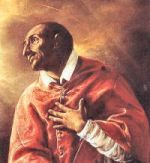Catholic Activity: July 4: Independence Day
July 4th, Independence Day, is an American national holiday. This holiday gives us time to thank God for the birth of our nation, and give thanks for gift of life and petition God to preserve our country and rid it of its evils. This is a great day for picnics and spending time with family and friends. Feast Day Cookbook gives many American traditions for this day.
DIRECTIONS
This month holds for Americans the celebration of our glorious Fourth, Independence Day, a great national holiday not connected with the feast of a saint (as is Saint Andrew''s Day in Scotland and Saint George's in England), or with a festival of the Church. And yet can it be said that the anniversary of the birth of a nation is ever an entirely secular affair? In this case we do not believe it is so. In man''s aspirations for freedom, there is always a spiritual element, and this was especially true in the thinking of the American signers of the Declaration of Independence at Philadelphia on July 4, 1776. On Thanksgiving Day we give thanks to God that He has provided our citizens with food for the body; at this other particularly American celebration we give thanks that He has allowed our spirit to live.
For years the Fourth of July has been marked in every city and town of the United States by patriotic gatherings, parades, and speechmaking in the principal square; the national anthem and other songs are sung (which sound especially well when shrilled by young and untrained voices); and martial airs are played by the local band. But the firecrackers of our childhood are no more, a pity and a blessing too. The slogan of a safe and sane Fourth is now becoming a fixed rule everywhere, and in these days the fireworks are set off at night by competent and careful manipulators.
Last Independence Day we attended such a display — one of many thousands throughout the country — and sat on a hilltop watching the fireworks. Around us children chattered and lighted sparklers; when some particularly dazzling skyrocket burst red and blue and white against the night sky, there was clapping from the crowd. Last of all appeared the usual "set piece" — the American flag with Roman candles clustered about it.
All stood up as a voice in the crowd began "The Star Spangled Banner"; the singing grew louder and louder as more people joined in. The peaceful evening and the rockets'' harmless glare, the voices of free people singing a free song, the knowledge that that freedom had been defended in the past and might have to be defended again on nights far from peaceful and with weapons far from harmless — all produced an emotion that could perhaps be called sentimental. But devotion to the truth that made us free, and alone will keep us free, was still there, right in the midst of the sentiment.
Independence Day food is often of the picnic variety, as is right for a holiday usually spent in the open. But there are traditional dishes originating in George Washington's Virginia. One such is a breakfast specialty, Rice Waffles.
Another dish of the day is poached salmon with egg and caper sauce, served with green peas and mashed potatoes. Not only is this the traditional time for serving the first salmon of the season, but we learn that this menu of soft foods was prepared for the Father of our country because of the discomfort caused him by his ill-fitting set of false teeth!
And of course the day's dessert everywhere has long been a triangle or a circle of watermelon. Never, never, we hope, will it become the small new variety just developed, we hear with a sense of shock, with no seeds at all. The color combination surely should all be kept in the true watermelon — the black seeds, with the red, the white, and the green.
Further, we hear, the experts are working not only to produce a seedless watermelon, but one with a very thin green rind. When that happens, what will happen to one of the nation's delicacies, the watermelon pickle?
Another dessert in favor on the Fourth of July from the very beginning of these United States is the Independence Day Cake. This very properly had its origin in Philadelphia, and every heirloom cookery book has its recipe. Tall and frosted in white, it is surrounded with a wreath of gilded leaves, made in early days of the boxwood so popular in colonial hedges. It is a cake of victory, of snowy purity, its wreath reflecting the gold of the seal of the Declaration, well suited to a day which made this a free land for free men.
Activity Source: Feast Day Cookbook by Katherine Burton and Helmut Ripperger, David McKay Company, Inc., New York, 1951






